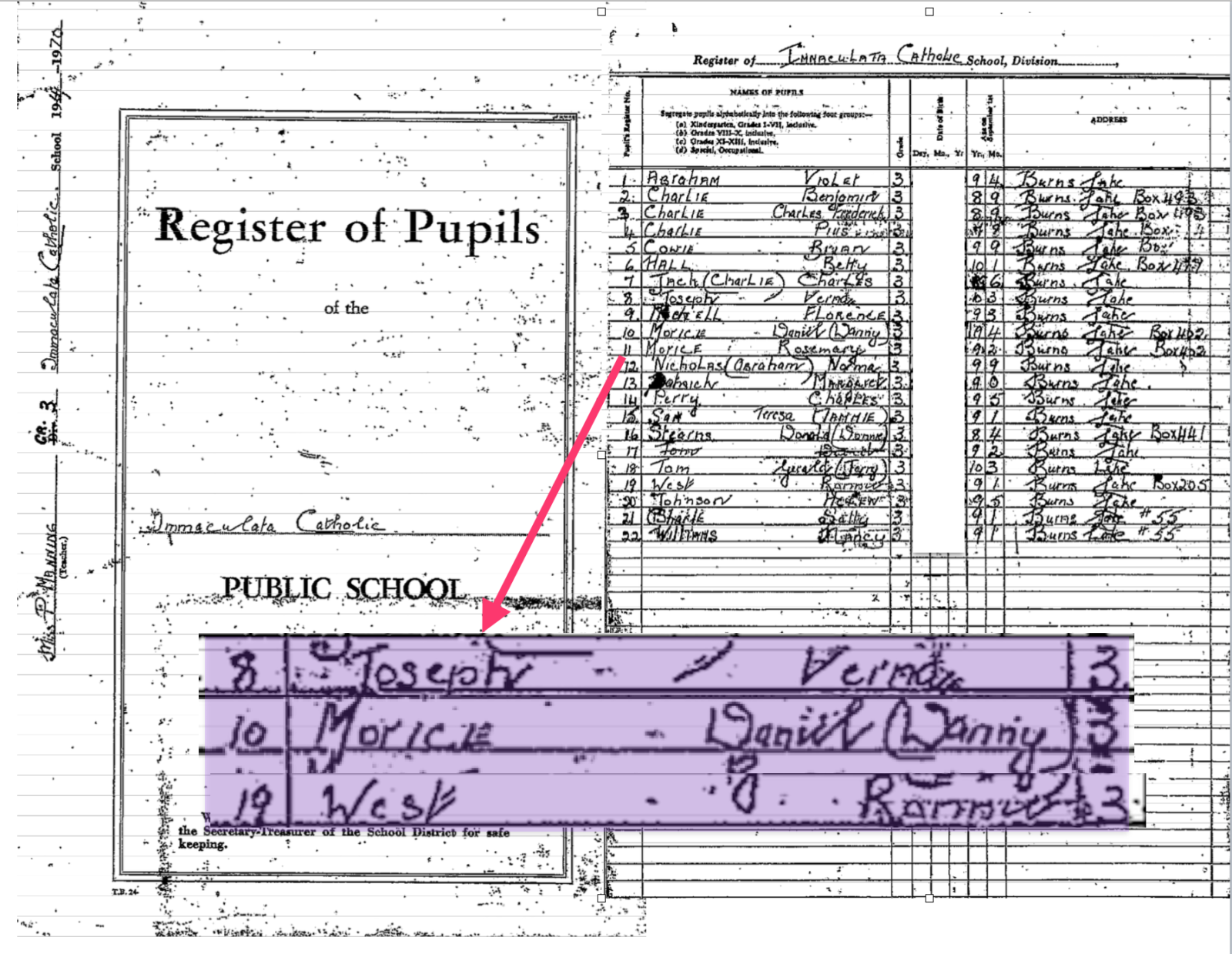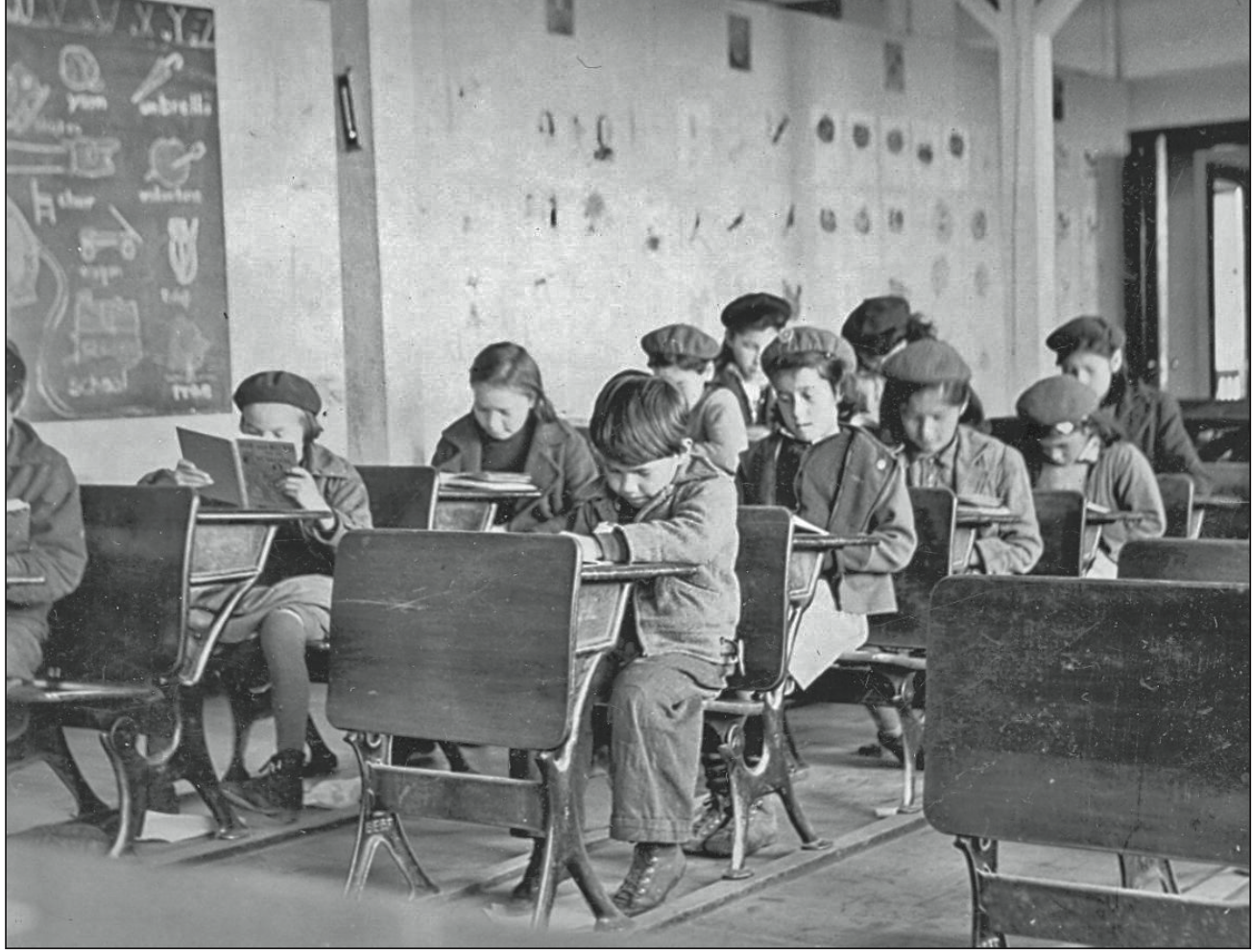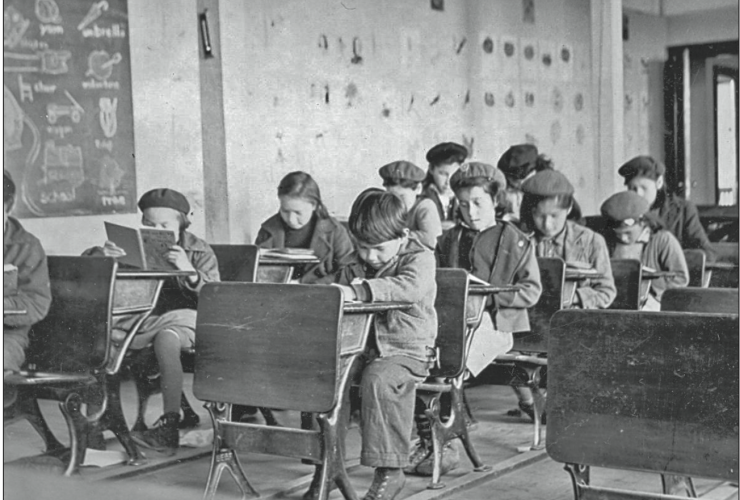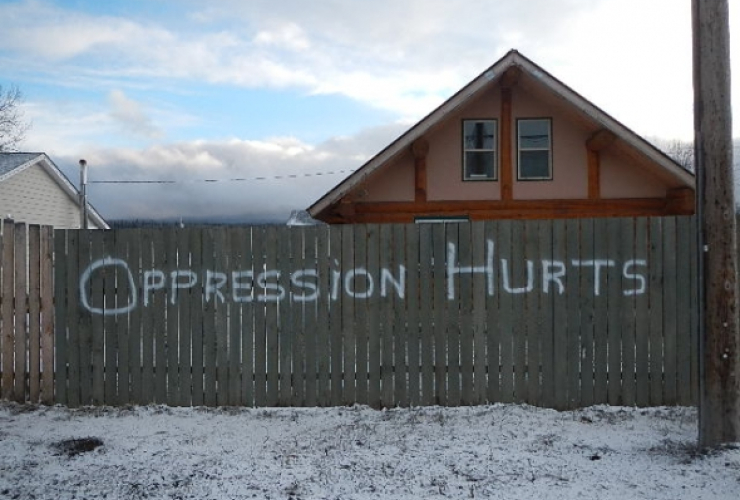Once upon a time, when I was still a pup junior Crown prosecutor in the 1980s, a brief sentencing hearing in a routine plea deal forever crystallized the fortress and labyrinth of the Canadian justice system. It revealed more than I wanted to know, about the system and about myself.
In sentencing hearings, defence counsel relate mitigating or personal details the court should take into account. In this case the lawyer for an Aboriginal habitual offender (who financed his addiction through property crime) told the court he was in mourning as his common-law wife had been murdered, her body stuffed in a dumpster.
The thing is, all of us in the courtroom knew her. She'd been an Aboriginal sex-worker, also financing her own addiction. The sheriff, court staff, trial judge and I had all seen her come through the revolving door of DTES soliciting charges.
There was an awkward pause as the recognition and the tragedy and the horror sunk in, but nobody acknowledged it, or uttered a word for of condolence to this beaten man. We knew this woman—her face is before me still—tiny, fragile, and short-haired.
Reality careened into the courtroom like a car crash, but we all ignored it and followed our script to the letter. The judge passed a short prison sentence, the sheriff took the convicted offender into custody, and the system never skipped a beat. God forgive me, but I followed suit and never said a thing.
The man was escorted out through the door for prisoners without a word of acknowledgement from us and was gone. Disappeared. I called the next case.
Whatever natural expression of sympathy or empathy, or just common human decency that the moment called for, it's still stuck in my throat and will stay there forever.
It was suddenly clear how completely that man and his lost wife were "the other." They were outsiders who passed through our system and our daily lives, but they weren't us. Yet whatever took them from childhood to their doomed and devastated lives as adults, we in that courtroom were part of it.
As the Truth and Reconciliation Commission issues its final report, and the Missing and Murdered Indigenous Women Inquiry gets under way, it’s Canada's solemn duty to learn things it’s unbearable to know.
And then to change. The Reconciliation is for us to do.
In The Fire Next Time, his searing exploration of race in America, James Baldwin wrote:
[T]his is the crime of which I accuse my country and my countrymen, and for which neither I nor time nor history will ever forgive them, that they have destroyed and are destroying hundreds of thousands of lives and do not know it and do not want to know it...
But it is not permissible that the authors of devastation should also be innocent.
It is the innocence which constitutes the crime.
The stone cold truth is that we are not innocent and never were.
Safeguards meant to protect the innocent shield the powerful
The Truth and Reconciliation Commission identified fewer than 50 criminal convictions arising from allegations of abuse at residential schools, yet some 38,000 reports of sexual and serious physical abuse were submitted to the formal review process (at p. 213). That’s a 0.13 per cent conviction rate—so vanishingly low it’s a wonder anyone was ever convicted at all.
As the TRC noted, the Crown refused to prosecute these cases out of "a belief that the denial of any accused person who occupied a position of authority at the schools would be sufficient to create a reasonable doubt about guilt.” Lack of independent corroboration—something virtually impossible to secure after the passage of time—finished any chance of success in the legal system.
For Indigenous people, our justice system is an abysmal fraud, where safeguards intended to protect the innocent more often shield the powerful, including the police, from scrutiny and justice.
In the Oppal inquiry into the botched Pickton serial killer investigation, taxpayers paid as many as 24 lawyers to represent police interests, while the government funded only one to represent Aboriginal interests. By the time that lawyer quit in frustration, outgunned and overwhelmed by work, thirty-eight full days of police evidence had been heard, and not one Indigenous witness.
When the government wouldn’t fund lawyers for better community representation, Commissioner Oppal expressed the hope that some lawyers could be found who would work for free.
Of course, with 24 lawyers for the police, the public never did get an answer as to how police blew the case so badly that Pickton killed at least 13 women right under RCMP noses after he'd been identified as the prime suspect.
And a book could be written on the recent controversy and trial over allegations of abuse made by Aboriginal former students against John Furlong, the CEO of Canada’s Olympic Games. Furlong had taught phys-ed at Immaculata Catholic School in Burns Lake in 1969-70, a period which 45 years later mushroomed into six lawsuits, five of which were dismissed or withdrawn before trial. The last one finally concluded decisively in Furlong's favour last September.
While most of the allegations claimed harsh physical and emotional abuse, three individuals alleged sexual abuse.
Consider what happened to Daniel Morice. One of three who launched lawsuits that were later dismissed, Morice was subjected to humiliating national ridicule and contempt when Furlong's lawyers announced the revelation that he’d never attended the Immaculata school.
That information was one of several factors (many of them egregious, it must be said) contributing to the dismissal of Morice's lawsuit. Furlong's lawyers had verified that Morice attended Lejac Elementary School in a nearby community. He had reported abuse by a priest there, for which he received payment as part of the TRC-related compensation.
Justice Catherine Wedge, the trial judge in the Furlong case, accepted in her ruling that Morice had not attended Immaculata, rebuking the reporter Robinson for poor fact-checking.
Open and shut?
Yet look below at the Immaculata school records entered as an exhibit at the Furlong trial, at the page for Miss P. Manning’s Grade 3 class list for 1969-70. There, at number 10, is one Daniel (Danny) Morice. According to Immaculata records, he attended 172.5 days that year, from September to June. The records also show he was there the year earlier for Grade 2, when he attended 159 days.

Perhaps Morice changed schools sometime after the 1969-70 school year, and there was a clerical error about when he started at Lejac.
Morice’s attendance at Immaculata is further corroborated in an affidavit sworn by Ronnie West in May, 2012, and published at CANADALAND. West said he witnessed Furlong’s rough treatment of "Danny Morris" at Immaculata (which appears to be a mis-spelling of Morice). He said:
"I was a good athlete and he [Furlong] did not make any problems for me. I witnessed, however, the abuse of Danny Morris, the late Verna Joseph being kicked in the ass for not running quickly enough. He threw [a] basketball so hard at kids that it was enough to knock them down."
Check that class list again. Listed at Numbers 19 and 8 are Ronnie West and Verna Joseph. "The late Verna Joseph." What ocean of sorrow is contained in those four words? At least we know where she was in Grade 3.
We can't unravel the mystery of the conflicting records without more investigation.

But it was so easy for the public and media to heap scorn on Morice on talk shows and in newspaper columns all across the country. Like the man in my courtroom all those years ago, he was an outsider. If today Daniel Morice is a damaged, embittered and abusive man with no respect for lawyers or the justice system, which he undoubtedly is, we should search our own consciences about how he got that way.
But he was telling the truth about at least one thing; he was at Immaculata when John Furlong taught there, and the proof is right in the court's own records.
Nothing about us without us
Yet the most striking feature of the epic Robinson-Furlong legal melee is what didn’t happen.
What didn’t happen was for Indigenous Canadians who made claims against a powerful public figure to have their day in court. Indeed, the Furlong trial was marked by not just the absence, but by the explicit exclusion and suppression of evidence from Indigenous witnesses about a matter of profound concern to them.
On a motion by Furlong’s defence counsel at the outset of the trial over whether he had defamed Laura Robinson, every affidavit sworn by his former students was ruled inadmissible and excluded as irrelevant and prejudicial. Prejudicial to whom?
And so the door quietly closed on any evidence from the Furlong claimants themselves, and was locked from the inside. From that moment on, this was a trial by and for the non-Indigenous people in the room, full stop.
Except as everyone knows, it wasn’t. In the public’s mind this was more than a defamation case, it was a trial about what John Furlong did or didn’t do all those long years ago and so far away. It was the Indigenous claimants who were on trial, through the proxy Laura Robinson.
Running like a vein of ice through the judge’s ruling is the unspoken inference that all the claimants’ stories are false. In fact, her approach toward them seems strangely cold, although she'd heard not a whisper of evidence from a single one.
Whether John Furlong’s accusers were truthful, mistaken or lying, we still don't know to this day. Clearly some of the evidence and witnesses are seriously compromised, but the majority haven't been scrutinized at all. In view of the larger context, the claimants should have been heard in court, irrespective of any errors by the journalist who reported their story.
The Morice example shows what happens when we shut people out of a trial and jump to conclusions about them. Given all that we now know, more effort to accommodate Indigenous witnesses should have been made.
In the words of St. Thomas Aquinas, “justice without mercy is cruelty."
Freezing out the marginal and disenfranchised
The Furlong ruling has the dangerous potential to freeze out the ability of the vulnerable and disenfranchised to challenge the powerful and find voice in the media.
In its landmark 2009 ruling on defamation in Grant vs. Torstar, the Supreme Court of Canada sided squarely with the constitutional right of journalists to report on matters of public interest, so long as they do so responsibly. The court said (emphasis added):
The first two rationales for the freedom of expression guarantee in... the Canadian Charter of Rights and Freedoms — the proper functioning of democratic governance and getting at the truth — squarely apply to communications on matters of public interest, even those which contain false imputations. Freewheeling debate on matters of public interest is to be encouraged and the vital role of the communications media in providing a vehicle for such debate is explicitly recognized in the text of (the Charter) itself.
The Supreme Court recognized the very serious problem of the damage to reputations of individuals, including public figures, but found that this interest does not outweigh the public's interest in full debate on matters of importance, and the vital role of the press in reporting it.
It prescribed comprehensive directions for journalists to follow when reporting matters that veer into the realm of defamation, giving instruction to lawyers and judges to carefully weigh and balance two important and competing interests.
In the Furlong trial, the judge didn't concern herself with the public interest in getting at the truth of what happened at Immaculata School. Rather, Furlong’s reputation was of paramount concern. She found that when someone faces "such serious and devastating allegations" as those leveled at John Furlong, reporters have a high bar to meet.
Yet the judge's finding that Robinson had not even minimally “tested” most of the claims of her sources flies in face of the the TRC recommendations, which point to the practical impossibility of obtaining independent corroboration for marginalized victims.
In Torstar the Supreme Court of Canada ruled:
To insist on court‑established certainty in reporting on matters of public interest may have the effect not only of preventing communication of facts which a reasonable person would accept as reliable and which are relevant and important to public debate, but also of inhibiting political discourse and debate on matters of public importance, and impeding the cut and thrust of discussion necessary to discovery of the truth.
The inescapable implication of the Furlong ruling is the opposite. It doesn't matter if eight people in Burns Lake (or dozens more who gave unsworn statements) say they were physically abused as children by a powerful public figure. Without independent corroboration, the press shouldn’t report it and the public shouldn’t know it.
The danger is that nobody’s going to publish these stories at all. And if nobody will publish or prosecute, the powerful are immune. This is how to get a conviction rate of 0.13 per cent.
The Truth and Reconciliation Commission, Ireland's Ryan Commission into child abuse at residential and industrial schools, the Boston Globe's investigative journalism all involved an expansive view of the public interest over individual reputations.

Whatever journalistic errors Robinson made, it’s essential that our courts defend the rights of the marginalized and vulnerable to be heard, and the right of the media to responsibly yet fearlessly report on their experiences.
Even as the TRC releases its final report to Parliament, if the Furlong ruling stands as the last word on defamation, Indigenous and vulnerable voices will fall silent.
Furlong’s accusers have not backed down, and are expressing horror at a trial that disgraced and discredited them in absentia. They are adamant and unrepentant, and they're trying to turn up the pressure. They've asked for Prime Minister Trudeau and the government to intervene to provide some forum for them to be heard.
But few media outlets will report their statements now; a deeply unhealthy state of affairs for the press.
A real commitment to Reconciliation demands that we do this better, and get it right. While John Furlong has a powerful and justifiable interest in his own reputation, justice demands a better resolution for these claimants, who have never been heard, yet have been humiliated and shamed by a system that placed a powerful man's reputation above their own. Whether their claims are true or false, it's clear that the formal justice system as it is presently constituted, is failing Aboriginal Canadians.
Carolyn Bennett, Minister of Indigenous and Northern Affairs, committed the government to the principle "Nothing about us, without us" last week in the House of Commons.
She could start right here with this. Let's stop pretending we're innocent.
Wow. I just saw this story
Wow. I just saw this story now, more than five years after publication. Such a powerful commentary. Thank you for writing this and thank you to the NO for publishing and bringing it up from the archives. Highly recommended reading.
Your comments from 5 years
Your comments from 5 years ago are clear-eyed and as relevant as ever.
Disgusting examples of
Disgusting examples of rascism in a forum that should be open to an even-handed justice finding result with no person being excluded because of race, creed, or color.
I caught the Canadaland
I caught the Canadaland podcast recently and am really glad to find this. Sandy is the main reason I subscribe. Thank you.





Comments